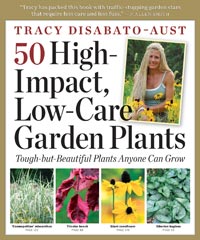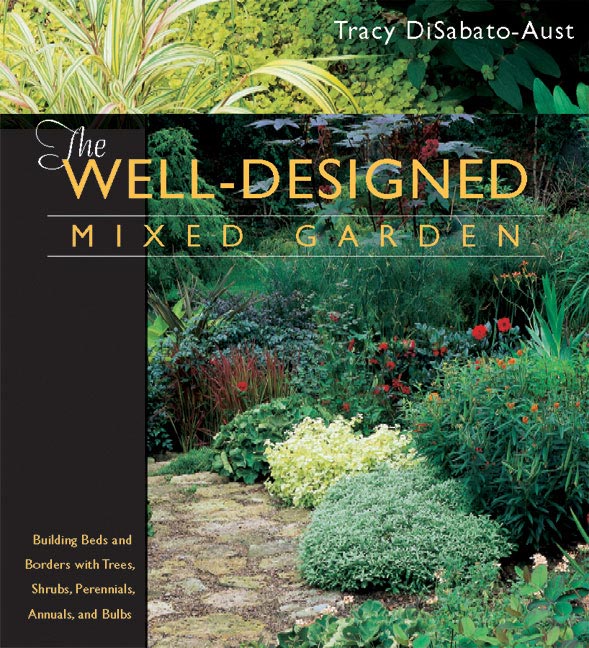Tracy on Mar 26th 2009 Seasonal,Soil,Videos

Matt Hickman portrait courtesy Mother Nature Network
Research indicates that 80% of all plant problems relate to poor soil. Most soil we work with in the home garden is considered “disturbed urban soil” and it often contains only 2% (or less) organic matter. According to the Perennial Plant Association herbaceous perennials require a minimum of 5% organic matter for optimum growth. Organic matter can improve drainage in clay soil and increase water and nutrient holding capacity in sandy soil. Research has also show that organic matter can increase plant growth by anywhere from 20-100% while maintaining higher than average survival rates. How does your soil stack up? Now is the time to test your soil and amend it to create a living soil that will help you be successful without synthetic chemicals. But all amendments are not created equal. Learn more about soils in my first book The Well-Tended Perennial Garden ( Chapter 2 Bed Preparation: Insurance for Success) and click here to read Matt Hickman’s blog from Mother Nature Network “The First Amendments” and view my video on “Improving Garden Soil”.
Tracy on Mar 10th 2009 Gardens,Hiddenhaven,Seasonal
 As plant nerds we all go through different plant fetishes. I’ve been through numerous “species obsessions” including the Geraniums, the lilies, and the Dianthus just to name a few. And currently I’m into Carex in a big way. But I’ve been in
As plant nerds we all go through different plant fetishes. I’ve been through numerous “species obsessions” including the Geraniums, the lilies, and the Dianthus just to name a few. And currently I’m into Carex in a big way. But I’ve been in  love with poppies (both annual and perennial) for about as long as I can remember. I even have a history of “smuggling” poppy seeds into the USA in my “unmentionables”J when returning from a year and a half of work/study abroad 28 years ago. The best germination success of annual species, for the home gardener in colder climates, seems to occur when the seeds are sown directly in February or March when the ground is free of snow. Also to ensure success I’ve learned to order fairly large quantities of seeds—one small
love with poppies (both annual and perennial) for about as long as I can remember. I even have a history of “smuggling” poppy seeds into the USA in my “unmentionables”J when returning from a year and a half of work/study abroad 28 years ago. The best germination success of annual species, for the home gardener in colder climates, seems to occur when the seeds are sown directly in February or March when the ground is free of snow. Also to ensure success I’ve learned to order fairly large quantities of seeds—one small  packet just doesn’t cut it. I’m talking about getting ¼ lb. or even 1 lb. of seeds when available. I sow seeds of California poppy (Eschscholzia californica), Red Corn Poppy or Flanders Poppy (Papaver rhoeas), and Bread or Opium Poppy (Papaver somniferum) about the gardens in any available space. It is harder to find large quantities of opium poppy so it may require numerous smaller packets for best effect. A great source for seeds of poppies is Wildseed Farms www.wildseedfarms.com. Also remember to allow poppies to go to seed once you’ve got them established in the garden. You can even cut off the mature seed pods and spread them about in the desired location. Good luck with these gorgeous plants.
packet just doesn’t cut it. I’m talking about getting ¼ lb. or even 1 lb. of seeds when available. I sow seeds of California poppy (Eschscholzia californica), Red Corn Poppy or Flanders Poppy (Papaver rhoeas), and Bread or Opium Poppy (Papaver somniferum) about the gardens in any available space. It is harder to find large quantities of opium poppy so it may require numerous smaller packets for best effect. A great source for seeds of poppies is Wildseed Farms www.wildseedfarms.com. Also remember to allow poppies to go to seed once you’ve got them established in the garden. You can even cut off the mature seed pods and spread them about in the desired location. Good luck with these gorgeous plants.

 As plant nerds we all go through different plant fetishes. I’ve been through numerous “species obsessions” including the Geraniums, the lilies, and the Dianthus just to name a few. And currently I’m into Carex in a big way. But I’ve been in
As plant nerds we all go through different plant fetishes. I’ve been through numerous “species obsessions” including the Geraniums, the lilies, and the Dianthus just to name a few. And currently I’m into Carex in a big way. But I’ve been in  love with poppies (both annual and perennial) for about as long as I can remember. I even have a history of “smuggling” poppy seeds into the USA in my “unmentionables”J when returning from a year and a half of work/study abroad 28 years ago. The best germination success of annual species, for the home gardener in colder climates, seems to occur when the seeds are sown directly in February or March when the ground is free of snow. Also to ensure success I’ve learned to order fairly large quantities of seeds—one small
love with poppies (both annual and perennial) for about as long as I can remember. I even have a history of “smuggling” poppy seeds into the USA in my “unmentionables”J when returning from a year and a half of work/study abroad 28 years ago. The best germination success of annual species, for the home gardener in colder climates, seems to occur when the seeds are sown directly in February or March when the ground is free of snow. Also to ensure success I’ve learned to order fairly large quantities of seeds—one small  packet just doesn’t cut it. I’m talking about getting ¼ lb. or even 1 lb. of seeds when available. I sow seeds of California poppy (Eschscholzia californica), Red Corn Poppy or Flanders Poppy (Papaver rhoeas), and Bread or Opium Poppy (Papaver somniferum) about the gardens in any available space. It is harder to find large quantities of opium poppy so it may require numerous smaller packets for best effect. A great source for seeds of poppies is Wildseed Farms www.wildseedfarms.com. Also remember to allow poppies to go to seed once you’ve got them established in the garden. You can even cut off the mature seed pods and spread them about in the desired location. Good luck with these gorgeous plants.
packet just doesn’t cut it. I’m talking about getting ¼ lb. or even 1 lb. of seeds when available. I sow seeds of California poppy (Eschscholzia californica), Red Corn Poppy or Flanders Poppy (Papaver rhoeas), and Bread or Opium Poppy (Papaver somniferum) about the gardens in any available space. It is harder to find large quantities of opium poppy so it may require numerous smaller packets for best effect. A great source for seeds of poppies is Wildseed Farms www.wildseedfarms.com. Also remember to allow poppies to go to seed once you’ve got them established in the garden. You can even cut off the mature seed pods and spread them about in the desired location. Good luck with these gorgeous plants.

